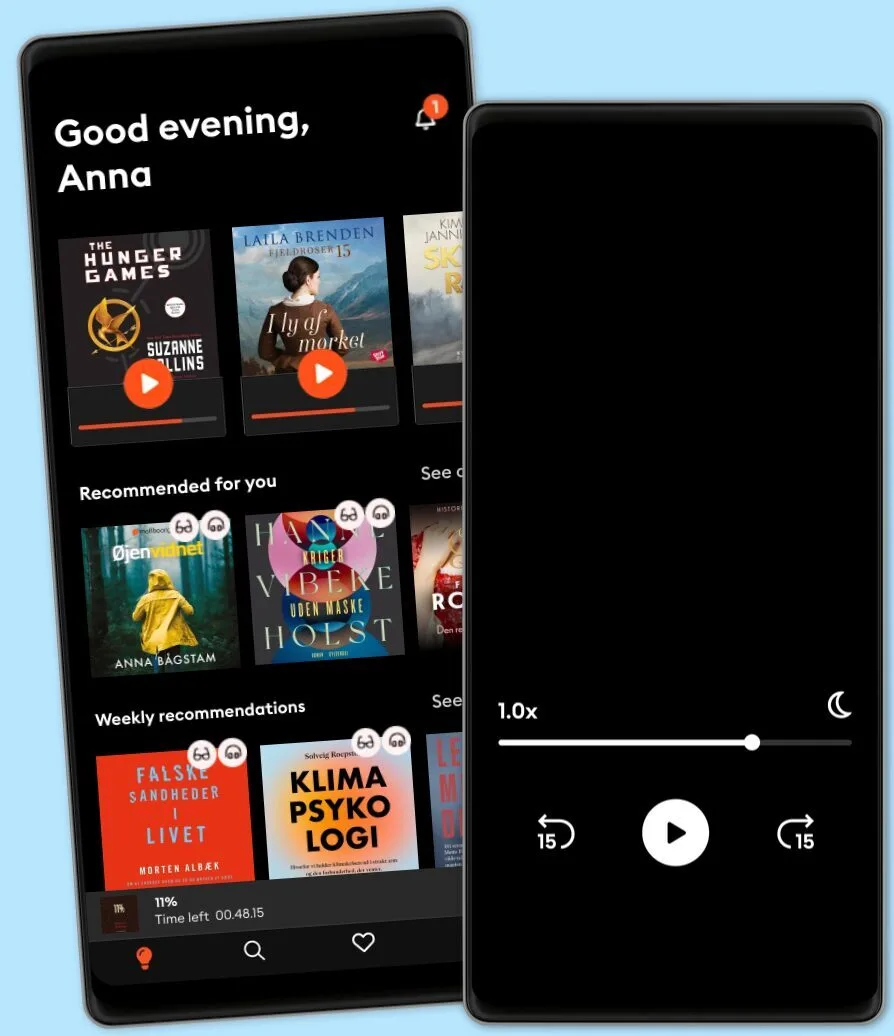Lyt når som helst, hvor som helst
Nyd den ubegrænsede adgang til tusindvis af spændende e- og lydbøger - helt gratis
- Lyt og læs så meget du har lyst til
- Opdag et kæmpe bibliotek fyldt med fortællinger
- Eksklusive titler + Mofibo Originals
- Opsig når som helst

Degas
- Sprog
- Engelsk
- Format
- Kategori
Fakta
Degas was closest to Renoir in the impressionist’s circle, for both favoured the animated Parisian life of their day as a motif in their paintings. Degas did not attend Gleyre’s studio; most likely he first met the future impressionists at the Café Guerbois. He started his apprenticeship in 1853 at the studio of Louis-Ernest Barrias and, beginning in 1854, studied under Louis Lamothe, who revered Ingres above all others, and transmitted his adoration for this master to Edgar Degas. Starting in 1854 Degas travelled frequently to Italy: first to Naples, where he made the acquaintance of his numerous cousins, and then to Rome and Florence, where he copied tirelessly from the Old Masters. His drawings and sketches already revealed very clear preferences: Raphael, Leonardo da Vinci, Michelangelo, and Mantegna, but also Benozzo Gozzoli, Ghirlandaio, Titian, Fra Angelico, Uccello, and Botticelli. During the 1860s and 1870s he became a painter of racecourses, horses and jockeys. His fabulous painter’s memory retained the particularities of movement of horses wherever he saw them. After his first rather complex compositions depicting racecourses, Degas learned the art of translating the nobility and elegance of horses, their nervous movements, and the formal beauty of their musculature. Around the middle of the 1860s Degas made yet another discovery. In 1866 he painted his first composition with ballet as a subject, Mademoiselle Fiocre dans le ballet de la Source (Mademoiselle Fiocre in the Ballet ‘The Spring’) (New York, Brooklyn Museum). Degas had always been a devotee of the theatre, but from now on it would become more and more the focus of his art. Degas’ first painting devoted solely to the ballet was Le Foyer de la danse à l’Opéra de la rue Le Peletier (The Dancing Anteroom at the Opera on Rue Le Peletier) (Paris, Musée d’Orsay). In a carefully constructed composition, with groups of figures balancing one another to the left and the right, each ballet dancer is involved in her own activity, each one is moving in a separate manner from the others. Extended observation and an immense number of sketches were essential to executing such a task. This is why Degas moved from the theatre on to the rehearsal halls, where the dancers practised and took their lessons. This was how Degas arrived at the second sphere of that immediate, everyday life that was to interest him. The ballet would remain his passion until the end of his days.
© 2024 Parkstone International (E-bog): 9781781605974
Udgivelsesdato
E-bog: 5. juni 2024
Tags
Andre kan også lide...
- Impressionism Nathalia Brodskaïa
- The Renaissance Engravers Jp. A. Calosse
- Hans Holbein the younger Jeanette Zwingenberger
- Goya and artworks Jp. A. Calosse
- Leonardo Da Vinci - Artist, Thinker, and Man of Science Eugène Müntz
- Dada Victoria Charles
- Decorative Art Albert Jaquemart
- Edgar Degas and artworks Jp. A. Calosse
- Ivan Shishkin Victoria Charles
- Hokusai Edmond de Goncourt
- Baroque Art Victoria Charles
- Rococo Klaus Carl
- Franz Marc and artworks Klaus H. Carl
- Schiele Stéphanie Angoh
- Utamaro Edmond de Goncourt
- James McNeill Whistler 1834-1863 Patrick Chaleyssin
- Dürer Klaus Carl
- Opium. The Flowers of Evil Donald Wigal
- Neoclassicism Victoria Charles
- Expressionism Ashley Bassie
- American Realism Gerry Souter
- Paul Signac and artworks Paul Signac
- Leonardo Da Vinci - Thinker and Man of Science Eugène Müntz
- Léon Bakst. The art of theatre and dance Elisabeth Ingles
- Turner Stéphanie Angoh
- 1000 Paintings of Genius Victoria Charles
- Rubens Jp. A. Calosse
- Hieronymus Bosch Virginia Pitts Rembert
- The Brueghels Victoria Charles
- Bosch Virginia Pitts Rembert
- Alphonse Mucha and artworks Patrick Bade
- Icons Nikodim Pavlovich Kondakov
- Romanesque Art Klaus Carl
- Christ in Art Ernest Renan
- The Arts & Crafts Movement Oscar Lovell Triggs
- Gothic Art Victoria Charles
- Art Deco Klaus Carl
- Art Nouveau 120 illustrations Jean Lahor
- Medieval Art in the Christian West Victoria Charles
- Klimt Patrick Bade
- Imperfect Sense: The Predicament of Milton's Irony Victoria Silver
- 1000 Watercolours of Genius Victoria Charles
Vælg dit abonnement
Over 600.000 titler
Download og nyd titler offline
Eksklusive titler + Mofibo Originals
Børnevenligt miljø (Kids Mode)
Det er nemt at opsige når som helst
Premium
For dig som lytter og læser ofte.
1 konto
100 timer/måned
Eksklusivt indhold hver uge
Fri lytning til podcasts
Ingen binding
Unlimited
For dig som lytter og læser ubegrænset.
1 konto
Ubegrænset adgang
Eksklusivt indhold hver uge
Fri lytning til podcasts
Ingen binding
Family
For dig som ønsker at dele historier med familien.
2-6 konti
100 timer/måned pr. konto
Fri lytning til podcasts
Kun 39 kr. pr. ekstra konto
Ingen binding
2 konti
179 kr. /månedFlex
For dig som vil prøve Mofibo.
1 konto
20 timer/måned
Gem op til 100 ubrugte timer
Eksklusivt indhold hver uge
Fri lytning til podcasts
Ingen binding
Dansk
Danmark